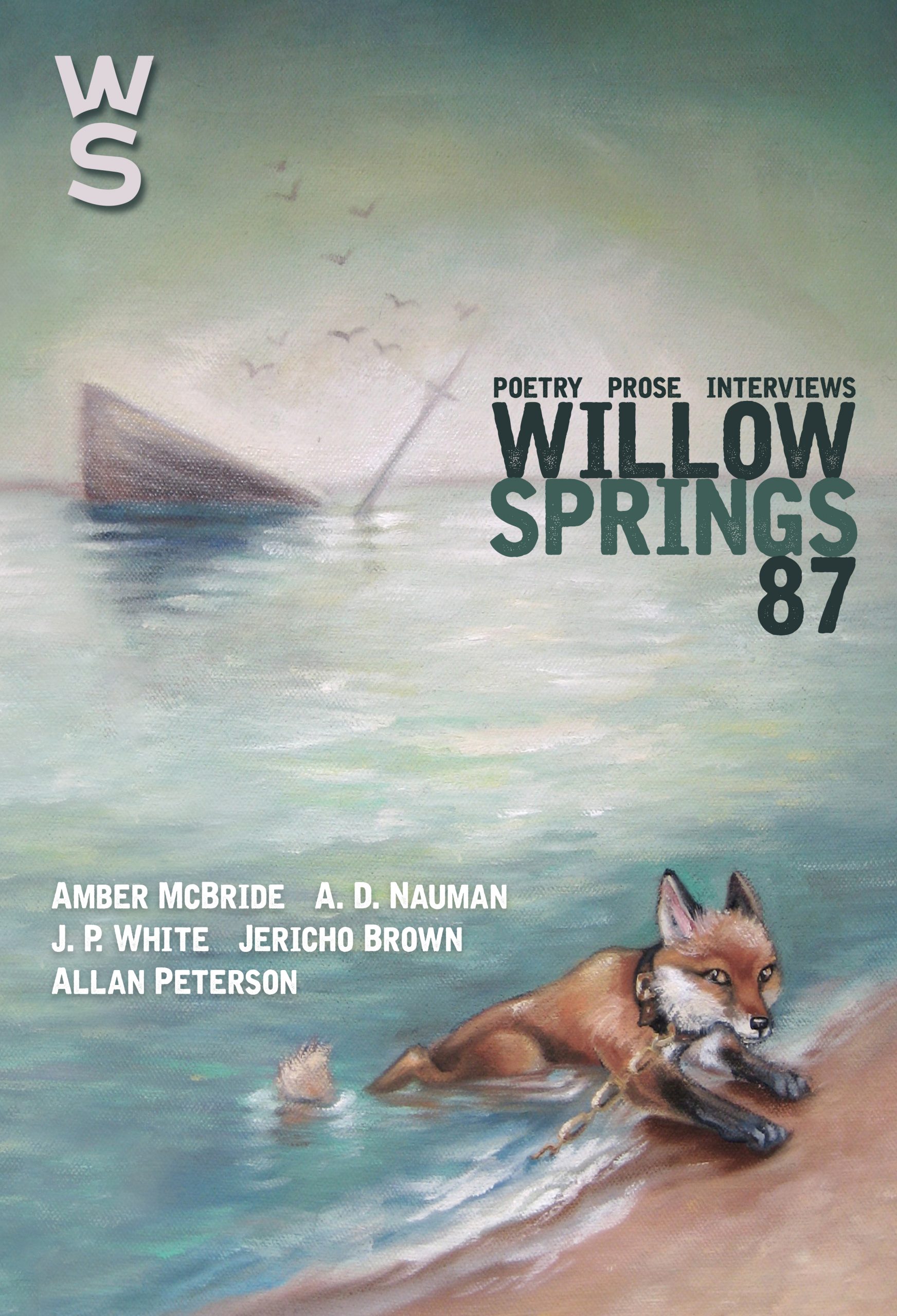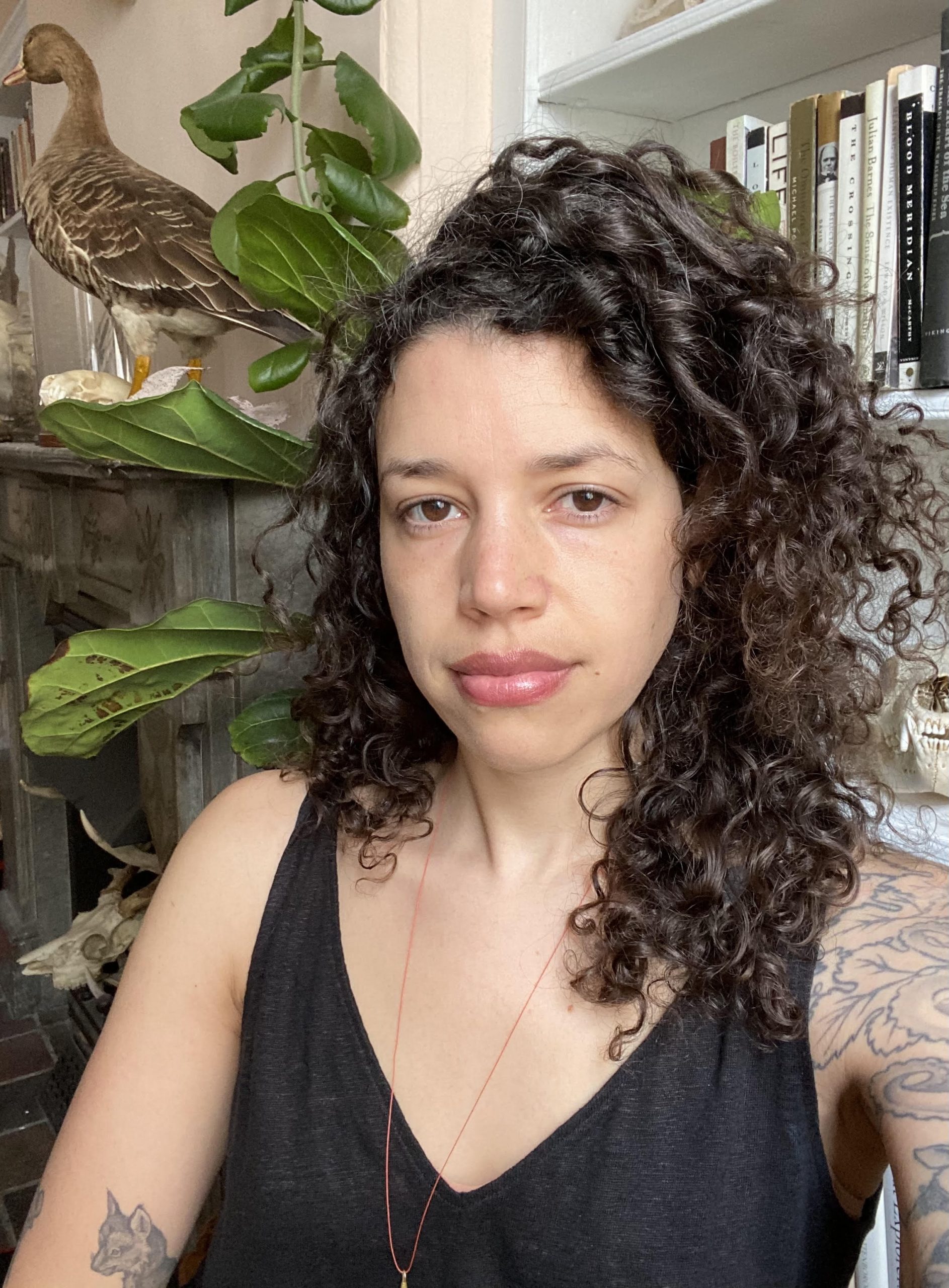
WINTER 2020
A TALK WITH WILLOW SPRINGS COVER ARTIST ALEXIS TRICE

Born and bred in New York City, ALEXIS TRICE has had an obsession with drawing and painting from a very young age, and flora and fauna have always been her subject of choice. After graduating from The School of Visual Arts with a BFA in Illustration, she started focusing on painting in oils. She creates fine art based on the natural world and has a business painting pet portraiture.
“To the self-interested, Alexis’s paintings seem to exploit conditions of entrapment, cruelty, and isolation. But the sense of exploitation falls away as the subjects become more dear to us, begging the viewer to consider what these conditions reveal about the necessity of our nature: to be free, to live without fear, and to propel ourselves into a greater, sometimes unfathomable scope of experience, however manipulative or dire. Horizons menace yet somehow beckon, reminding us where we stand in the scene: constraints serve as warnings, suffering betrays hope, and each contrivance—the better we see it—becomes urgently familiar.”
—Robert Canwell
Who are the artists you most admire, and how have they influenced you?
While I have a long list of artists and creators I deeply admire, I’d have to say first on the list is modern day painter Walton Ford, followed by naturalist and artist John James Audubon. Their deep admiration for and fascination with the natural world and its complexities have strengthened my curiosity and compelled me to explore and divulge my own personal narratives and approach.
Do you have a favorite piece of art (yours or someone else’s) and why?
Nearly impossible to choose one, but the artist who first comes to mind created such a unique niche that any single one of his paintings is an incarnation of his previous—Dutch Golden Age painter Otto Marseus Van Schriek. His work embodies the most seductive and elusive revelations of the natural work. Dark, sultry, curious, and so wonderfully, and sometimes even comically, rendered. His paintings encompass a special toad’s-eye view of the underbrush of the forest floor where our commonplace so-called “vermin” lurk with a hint of menace as well as astounding beauty.
What is your creative process when planning out a painting? How do you decide whether to do a piece in oils as opposed to watercolors?
Usually it starts with a flash of inspiration that I then break down but also build upon. There are particular animals that I feel very drawn to that I am constantly revisiting in my work. There is a language of sorts that I have constructed and portray through them.
Once I have a spark, I typically do a variety of thumbnail sketches, and then I search for photo reference online. I typically reference from many dozens of photos for each individual subject per painting, including plants native to the animals’ environment. From there I will refine and solidify a final sketch, and then move on to painting.
Sometimes I have ideas for work that have a more ethereal or illustrative feel to them, and that’s when I tend to take the watercolor approach. But for more complex, heavily layered and rendered pieces, oil is the way to go.
There is a real tension between the vibrancy of your colors and the darkness of your subject matter. How has the discourse on habitat destruction that we see throughout your pieces influenced your artistic aesthetic? And how have your aesthetic preferences influenced your subject matter?
My aesthetic and style of work has evolved on a separate plane from my subject matter. I suppose one may inform the other, and they ultimately dovetail, but not always. I think the delicate rendering of my subjects is greatly influenced by 18th century lithography, also a time period of peak exploration and attempted categorization of the natural world.
Two major veins in your work seem to be animals interacting with man-made objects or animals as victims of natural disaster. Can you discuss the overlap between these ideas?
Man-made objects are a disaster for animals and their environments, and a lot of disasters leading to endangerment are also man-made. Humanity has become a very powerful animal and force, to the degree that we are altering everything on our planet, including our weather. Let that statement sink in for a moment: the power to alter our weather. It sounds like centuries-old folklore, but it’s the undeniable state and suffrage of our earth. We essentially (human, animal, plant, elements, and so on) have all become victims of our actions and will continue to do so, lest some major and permanent changes are made.
What do you hope the viewer gets from those pieces that deal with the death of an animal versus those that highlight their natural beauty?
To me those are one in the same, cut from the same cloth, indivisible, though to the viewer it may not appear that way initially. I hope that my work can captivate the viewer long enough to sit and sort through the potential feelings of unease and discomfort. Of course, as with any art and viewer, the goal is to deepen connection and a (sometimes unspoken) understanding. There is no life without death, and there is no beauty without suffering.
How has the turmoil of the last year or so (the pandemic, the election, protests against racial injustice, the confluence of natural disasters, etc.) affected your work in terms of subject matter? Has it affected your process or the way you see yourself as an artist?
Ironically (and gratefully), I think the pandemic has made an unexpected deepening awareness between humanity and nature. It has made us slow down, savor and appreciate what our immediate surroundings have to offer and ground us, instead of the infinite world of distraction. Turmoil, so to speak, has had a continuous place in the undercurrent of my work. Because of this, I think my work has spoken to people in a new light, and as for me, I have felt a pivotal importance in my work in the ways of exhibiting and the truth of the subjects we tend to shy away from.
Where can people find your work?
Instagram @alexis_trice
And of course, my website, www.alexistrice.com.

